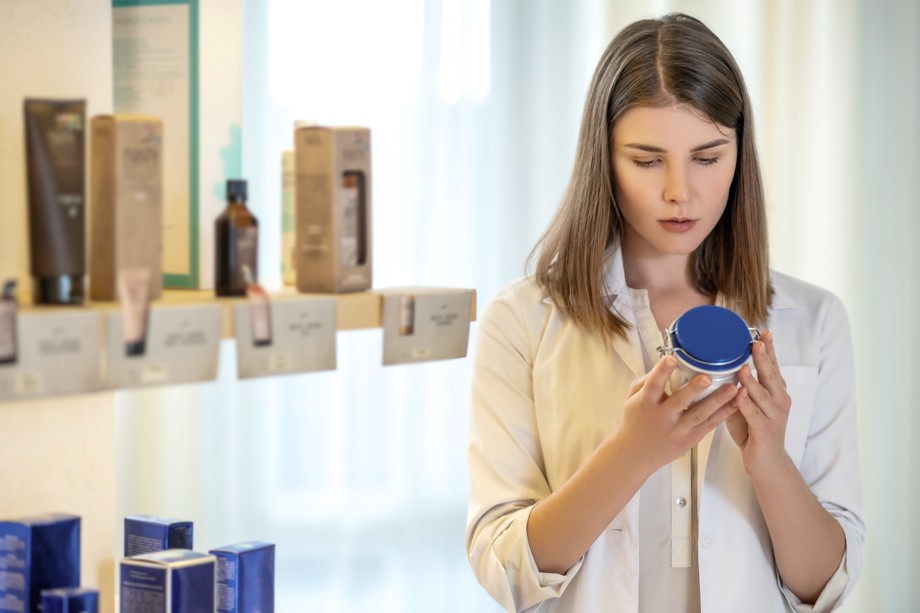Every day we reach for different cosmetics. These are products for washing and skin care, as well as protective preparations and face styling products. Each cosmetic consists of various chemical substances whose Latin names sound foreign and incomprehensible to the layman. How to read the composition of cosmetics ? Here are some practical tips.
What is the point of reading the ingredients of cosmetics?
Are all cosmetics available in stores 100% safe? It turns out not. Many of them contain harmful (or potentially harmful) substances. Low-quality cosmetic products often cause itching, redness, allergic reactions and hives. This is a natural reaction of the body, which tries to defend itself against toxins contained in cosmetics.
In the 21st century, conscious consumers read the labels of cosmetic products more willingly and with commitment. Why is it worth checking the composition of various preparations, gels, soaps, etc.? It is a positive habit thanks to which:
- we get to know the substances with which we have constant contact better,
- we are able to detect possible threats and danger of poisoning,
- we can assess whether the price of the product corresponds to its quality.
By comparing the composition of various cosmetics, we gain a broader picture and knowledge about the products of individual brands. This knowledge allows us to make wise consumer decisions.
What information can be found in the composition of a cosmetic?
Pursuant to Regulation (EC) No. 1223/2009 of the European Parliament and of the Council of November 30, 2009, companies are required to include information on product composition on labels (packaging, leaflets). The individual ingredients should be indicated:
- in descending order,
- by weight at the time they are added to the cosmetic product.
When we look at any label, we will see that the ingredients that the product contains the most are listed first. The legislator indicates that ingredients with a concentration of less than 1% may be listed in any order after the ingredients with a concentration higher than 1%. All ingredient names should be standard, i.e. in accordance with the International Nomenclature of Cosmetic Ingredients (INCI). Most often these are Latin or English names.
How to read the composition of cosmetics? Helpful tools
Foreign-sounding names of chemical ingredients are usually hard to read, and even harder to understand what they actually mean. How to interpret the composition of cosmetics? The creators of French applications such as INCI Beauty or Polish Kosmopedia (developed by the Polish Association of the Cosmetics Industry) come to our aid. These are easy-to-use software, resembling dictionaries, containing all relevant information about selected substances.
INCI Beauty or Kosmopedia applications are constantly updated. By using them, we can learn more about the adverse effects of chemicals. Intelligent programs also tell us what alternative ingredients or product substitutes we have to choose from.
Ingredients of face cosmetics: names of preservatives
Cosmetics, like food and medicine, perish quickly. Therefore, manufacturers must add preservatives to them in order to preserve certain properties and qualities of preparations for longer. How to recognize the names of preservatives? The list of the most commonly used preservatives in Poland includes, among others:
- parabens (Methylparaben, Propylparaben, Butylparaben),
- Sodium Benzoate (sodium benzoate),
- Benzoic Acid (bensoic acid),
- Salicylic Acid (salicylic acid),
- Formaldehyde (formalhedide),
The above list, of course, does not exhaust the names of all cosmetic preservatives. The full list of substances approved for use can be found in the aforementioned Regulation EC No. 1223/2009 (Annex V).
Substances prohibited in the production of cosmetics
Although consumer awareness of cosmetic products is growing, we can still fall victim to unfair manufacturing practices. When we reach for low-quality cosmetics, including products imported from outside the EU, the risk of contact with poisonous chemicals is still very high. Let's be vigilant when we see substances such as benzene, trichloroacetic acid, chlorine, dimethylamine, nitrobenzene or aniline on the label. Products labeled as cosmetic should not contain substances with a therapeutic effect, such as hormones or antibiotics.
How to recognize high-quality cosmetic products?
Reading long and complicated chemical compositions is a big challenge for many people. We do not always have the time and desire to quickly check whether a given product is 100% safe for our health. How to recognize high-quality cosmetics? Price and brand name are not the best criteria for consumer choices.
If we want to be sure that we reach for a proven cosmetic, we should pay attention to whether it has: appropriate approvals (National Institute of Hygiene, Safety Assessment) and certificates such as: Eco-Cert or USDA Organic. The packaging should contain information on the composition, origin, expiry date and concentration of individual ingredients.
After carefully analyzing dozens of labels of various cosmetics, many consumers come to similar conclusions. It turns out that the best cosmetic products are distinguished by a simple composition and a relatively short shelf life.
What else is worth knowing about cosmetics and their composition? You will learn more about this by reading the next entries on our blog.

